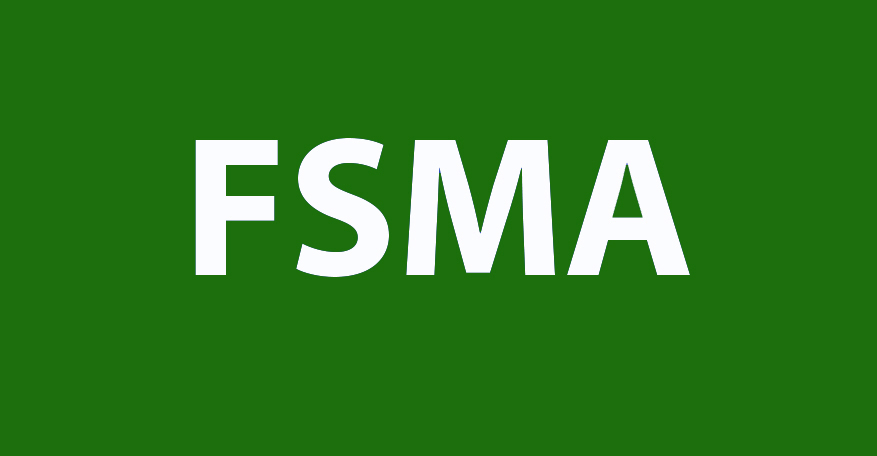The world of acidified foods is complicated—the question of how an acidified food is distinguished from an acid food, how to measure pH of acidified foods that are not homogeneous, what kinds and how records should be maintained and finally, how FDA enforces requirements? As consultants to FDA regulated industries, we receive numerous questions, as does FDA directly, on acid and acidified foods. This Q&A, answered by EAS Independent Consultant, Omar Oyarzabal offers insight into commonly received questions and their answers.
Q: How you distinguish an acid food from an acidified food?
Omar Oyarzabal: Acid ingredients have a natural pH of 4.6 or below, while low acid ingredients have a natural pH above 4.6. Acidified foods are comprised of low acid ingredients mixed with acid ingredient or acid to bring the finished product equilibrium pH to less than 4.6. Remember, all pH meters have a normal variation in the measurements, and therefore that variation must be understood and accounted for when measuring the equilibrium pH. For instance, if you measure a pH of 4.3, and may have a ± 0.02, the actual pH is between 4.28 and 4.32. If the variation is ± 0.05, the actual pH may be between 4.35 and 4.25. We would like to see some room for safety and therefore the highest target equilibrium pH is, in many cases, 4.4. The finished equilibrium pH is the pH of all components of the product. It can happen quickly after mixing and final preparation, or it may take hours or days.
Note: pH meters perform potentiometric measurements, meaning that the electrode measures a potential of [H+] or [OH-] in the test solution by comparison against known [H+] or [OH-] standard buffers. The numerical numbers produced by a pH meter are calculated following a scale. Therefore, we need to verify that the calculated pH scale is reliable by proper and regular calibrations.
|
|
|
Total Cases Reported for Previous Years |
| Botulism |
Cum 2017 |
Five-year weekly average |
2016 |
2015 |
2014 |
2013 |
2012 |
| Total |
79 |
4 |
201 |
195 |
161 |
152 |
168 |
| Foodborne |
5 |
0 |
31 |
37 |
15 |
4 |
27 |
| Infant |
71 |
3 |
144 |
138 |
127 |
136 |
123 |
| Other (wound and unspecified) |
3 |
0 |
26 |
20 |
19 |
12 |
18 |
| Table I. The main biological hazard of concern in acidified foods continues to be Clostridium botulinum. The latest Notifiable Diseases and Mortality Table was released by the CDC on January 5, 2018. Cases of botulism reported in the United States (Week ending December 23, 2017). |
Q: Is there a formal procedure for assessing initial/raw pH? Specifically, should pH be immediately measured or should the system be given time to come to equilibrium?
Oyarzabal: There are two important pH measurements, the raw pH and the equilibrium pH. The raw pH is the pH of all the low acid food ingredients without the addition of the acid ingredients or acid to bring the finished product equilibrium pH to below 4.6. The equilibrium pH is tested in finished product after the pH has “equilibrated” and all particles and components of the finished product have the same pH. It is customary to measure the equilibrium pH after 24 hours of manufacturing, but the actual time depends on the products. If the product has particles with high buffer capacity, the product may take more than 24 hours to achieve an equilibrium pH. The shift from raw pH to equilibrium pH is called the “pH shift”.
Q: What is the basis for the 10% rule for non-acid ingredients, and is it acceptable to have more than 10% but still have acceptable shift in pH?
Oyarzabal: There is no regulation requiring less than 10%. It is a rule of thumb based on experience that has been used for some acidified products over the years. It is not part of any regulation per-se. The actual amount of acidification in a formulation is something for a process authority to evaluate and make a final recommendation.
Q: A challenge study is generally requested for an acidified food filing, however, the detail for the challenge study is not specified. Previously the three main pathogens were suggested for evaluation (pathogenic E. coli O157:H7, Salmonella and Listeria monocytogenes) and a 5-log reduction as criteria. What are current requirements?
Oyarzabal: A challenge study may be needed when developing a new product. But the microorganism of public health concern and/or spoilage concern will depend on the type of product (ingredient formulation) and process. New product should be treated on a cases-by-case basis and a processing authority should make recommendations.
Q: What is the focus of the FDA inspections of acidified foods? What are the agency recommendations for processors?
Oyarzabal: FDA has stated in the Preamble to the final Preventive Controls for Human Foods (PCHF) regulation that acidified foods would not be exempt from 21 CFR 117, Subparts C (specific preventive control requirements) and G (supplier management). Essentially, an acidified food manufacturer, during an FDA inspection, will be have to demonstrate compliance with both 21 CFR 114 (acified foods) and 21 CFR 117 (all foods). During any given FDA inspection, the FDA investigator may focus their attention on just part of the acidified food operation and the applicable regulations or on the entire acidified food operations and all applicable regulations. It is dependent upon the individual FDA investigator, the circumstances triggering the investigation, any recent illness outbreaks or deaths associated with a similar acidified foods, written FDA headquarters programs on acidified foods, etc.
Q: Is a continuous recording method required to prove compliance in meeting Critical Control Points at all times or is periodic manual check acceptable?
Oyarzabal: From a preventive controls perspective, there is no requirement for continuous monitoring. Monitoring has to be performed frequently enough to make sure there is “demonstrated” control of the hazard(s) addressed at that process or step. It may come down to what equipment is in place. But at the end of the day, the preventive control regulation provides flexibility for frequency, so long as it is appropriate to control the identified hazard. If a firm has justification that monitoring at a certain frequency is sufficient to control a hazard, it would be helpful to provide that justification if the issue came up during an inspection. Justification should be emphasized for the frequency of monitoring and verification, and must be robust enough to guarantee safety.
Q: Are salad dressings exempt from the acidified food regulations? What about cold brew coffee?
Oyarzabal: Most salad dressings may be exempt, but it would be wise for any salad dressing manufacturer to ensure that they are using a processing authority with expertise in the type of product to conduct a food safety evaluation and put their recommendations in writing, just in case there is a challenge by FDA, a customer or competitor.
All the cold brew coffees we are aware of are sold under refrigeration and therefore are exempt from low acid or acidified food product regulations.
Note: Most states have individuals that will help the industry identify the laws covering their products. The FDA also has a portal for submission of industry request related to food safety regulations that may apply to specific products.
Q: I want to produce a cold-fill beverage that will have preservatives in the recipe, do I still require a process authority to create a process schedule?
Oyarzabal: You need to have someone to review the product formulation and the process to see if it is a low-acid or acidified food, and determine the food safety regulation under which the product falls. It may be exempt from some regulations, but someone with the appropriate knowledge, such as an FDA recognized “Process Authority”, needs to make that determination. The FDA also has a portal for submission of industry questions related to food safety regulations that may provide a more direct answer to this question.
Q: What are FDA’s expectations on cold-filled acidified foods? Do we need to hold the products till the product formulation ensures 5-log reduction of relevant pathogens?
Oyarzabal: This is a product-related question and without the full understanding of the formulation and process, it is hard to provide any recommendation. The cold-filled process can be managed for acidified foods in a manner that would maintain the safety of the food and not impact the pH requirements or result in recontamination.
Q: Does FDA consider “water” ingredient as a “low-acid” ingredient? What about under the FSMA Rule?
Oyarzabal: Yes, traditionally water has been considered a low acid ingredient as it has the ability to modify the pH of the food. In some recipes water is added in such a low amount that it doesn’t change the rest of the formulation. The addition of water in those cases doesn’t change the rest.
Q: Are inspectors using the Acidified Guidance Document that was pulled a couple of years ago for inspections?
Oyarzabal: The 2010 draft received lots of comments, and ultimately was never finalized from draft form. Investigators inspecting acidified foods are aware of the 2010 guidance, but they should not be enforcing the provisions in this draft guidance. A guidance document is not binding on FDA or industry, but provides recommendations to consider as it contains the agency’s thinking at a given time in relation to a given piece of regulation. That being said, based on observations and comments from the acidified food manufacturing industry, FDA investigators are using the draft guidance as a reference source.
Q: Are electronic records permitted for process controls (e.g., electronic record of temperature instead of chart recorders)?
Oyarzabal: Yes. The Preventive Controls rule speaks to the acceptability, in theory, of electronic records, though, as stated in 117.305(g) they are not required comply with 21 CFR 11 (Electronic Records; Electronic Signatures). These along with any other records should be accessible and retrievable as appropriate in a reasonable time frame for review by an FDA investigatory.


















